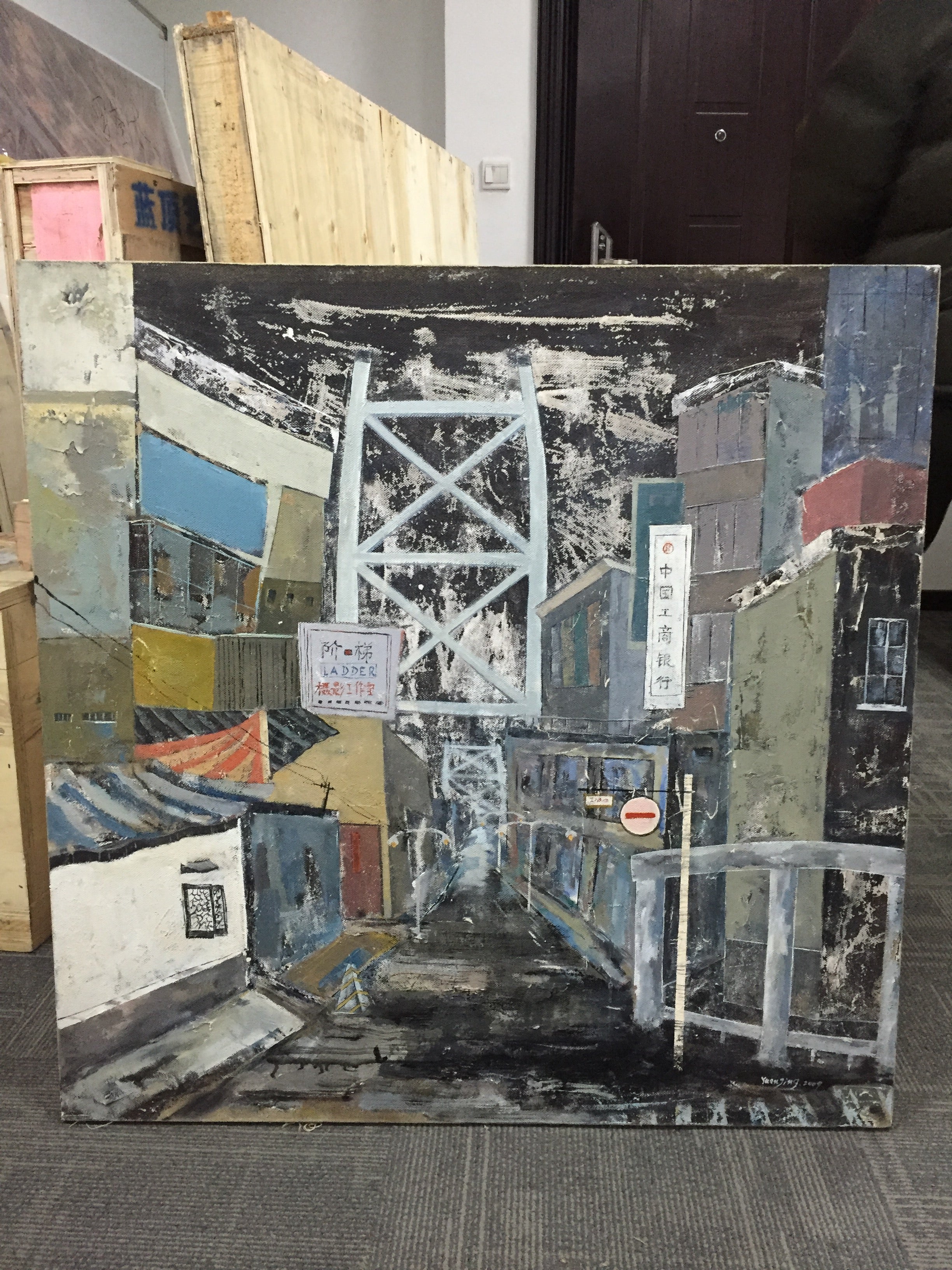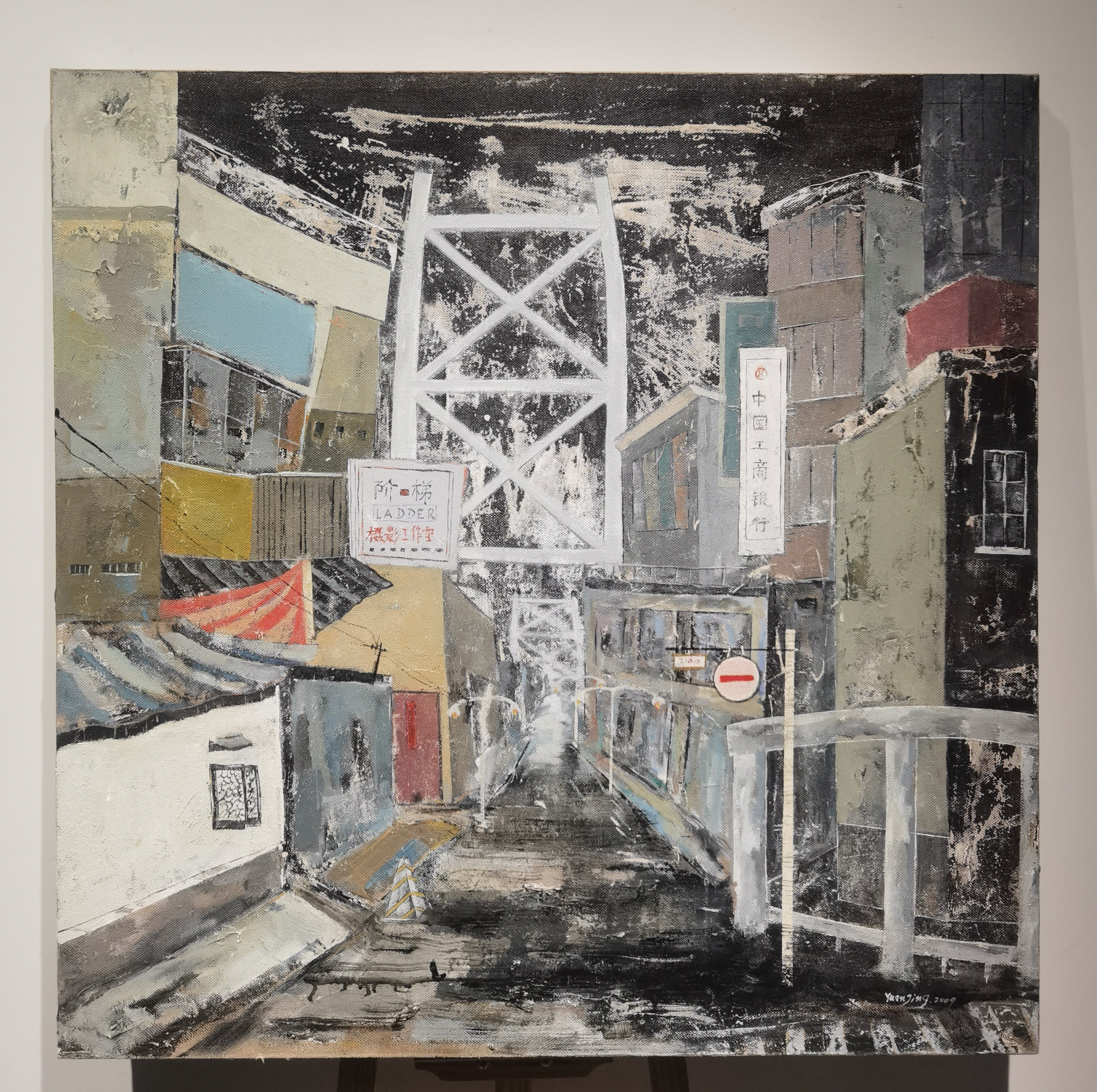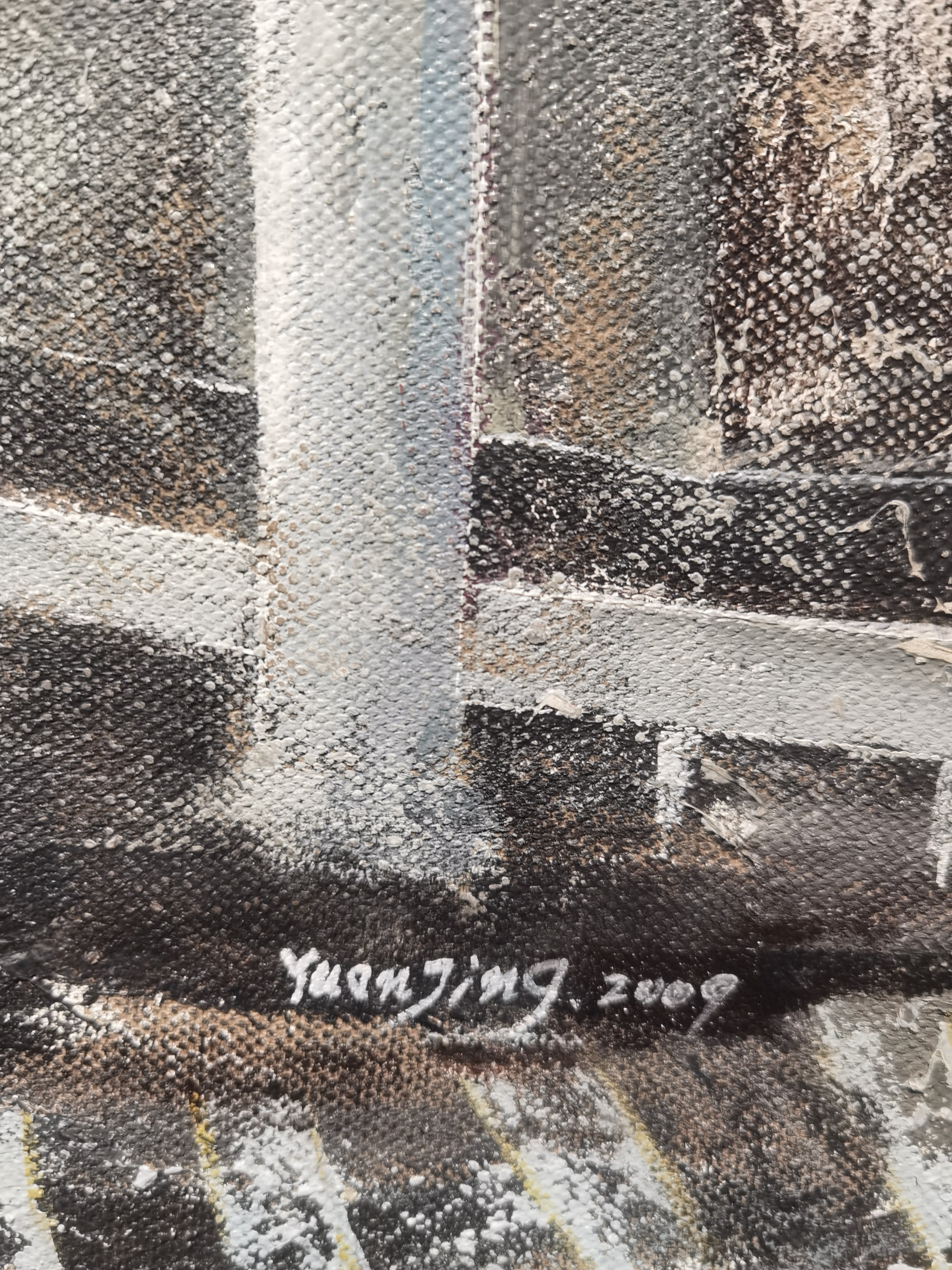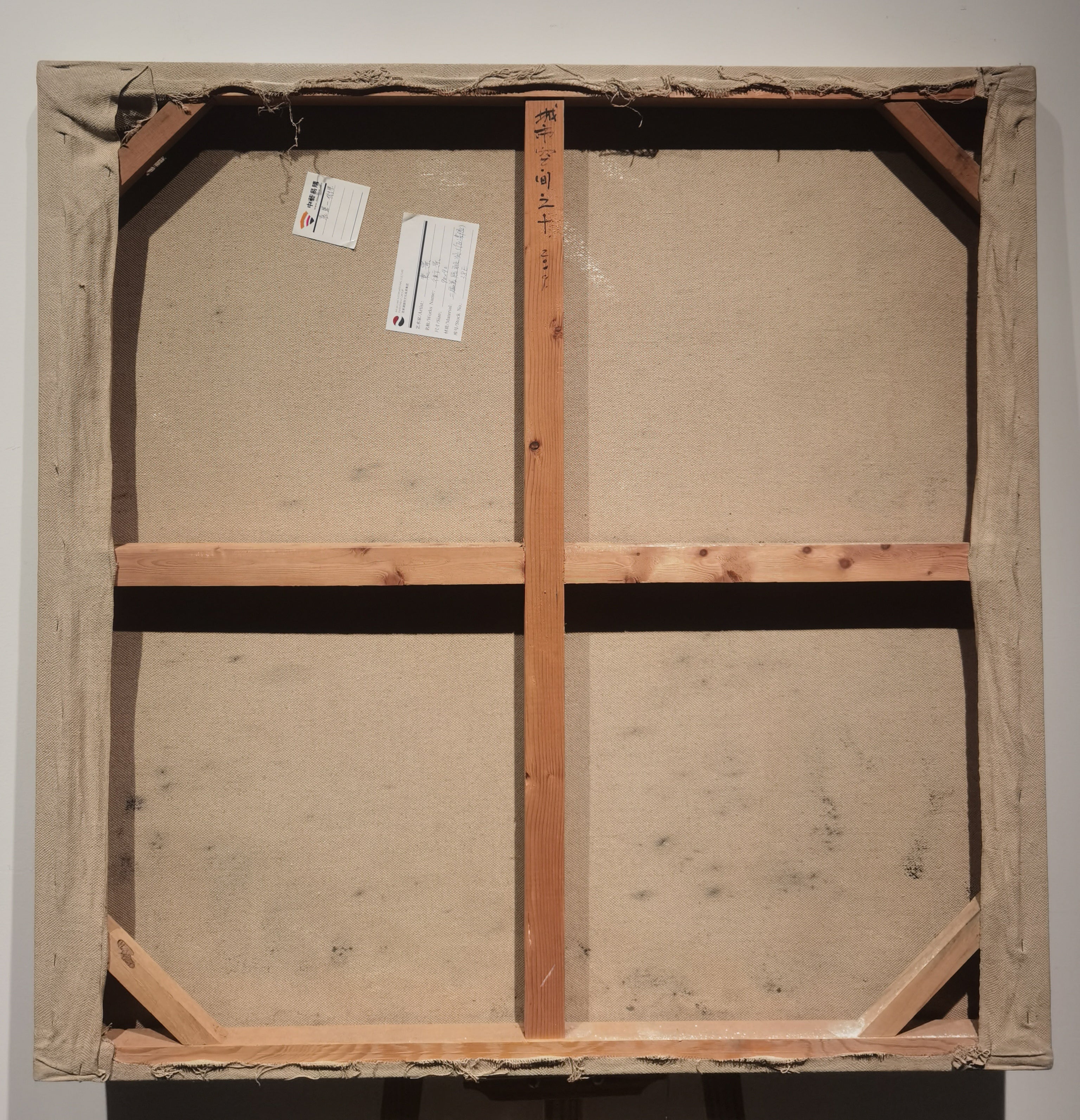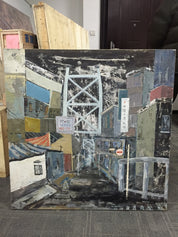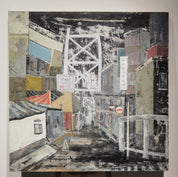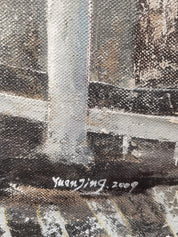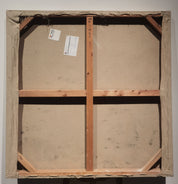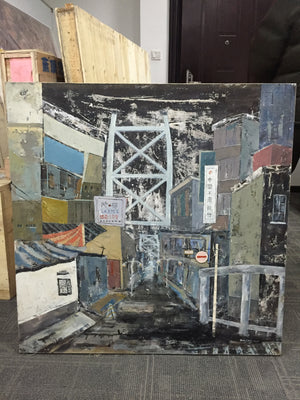Street View
Jing Yuan
Artwork Details
Artwork Description
Title: Street View
Artist: Jing Yuan
Date: 2009
Medium: Oil on canvas
Dimensions: 35.4 x 35.4 in (90 x 90 cm)
1. Artwork Identification
Street View by Jing Yuan is a square-format oil painting executed in 2009, measuring 90 x 90 cm. Rendered in a layered, textured impasto style, the composition presents a gritty urban alleyway framed by closely stacked architectural forms. A steel bridge structure looms in the background, while various signboards, shopfronts, and traffic markings provide a sense of realism and spatial complexity.
2. Artistic Style and Influences
Jing Yuan’s style in this piece draws from urban realism fused with modernist abstraction. The raw surface texture and fractured planes recall elements of Cubism and Brutalism, while the muted palette, punctuated with flashes of red and ochre, evokes post-industrial melancholia. Influences may include Liu Xiaodong’s urban narratives or the structural compositions of early European modernists.
3. Historical Context
Painted in 2009, Street View emerged during a period of intense urbanization and cultural transformation in China. Artists of this era often turned their attention to the visual language of the everyday—construction sites, alleyways, signage—to record the rapid redefinition of space and social identity. The painting captures not only the built environment but the tension between preservation and erasure in modern Chinese cityscapes.
4. Provenance
Provenance documentation can be provided upon contact.
5. Condition and Conservation
The painting is in very good condition, with no signs of paint loss, surface abrasions, or structural instability. The artist’s use of impasto and visible brushwork is intentional and intrinsic to the composition.
6. Artistic Significance
Jing Yuan’s Street View exemplifies a compelling approach to contemporary urban documentation through oil painting. It stands as a visual record of change, imbued with mood and materiality. The interplay between architectural geometry and expressive surface lends the work both historical and aesthetic value, making it a resonant addition to collections concerned with 21st-century urban narratives in Asian art.

